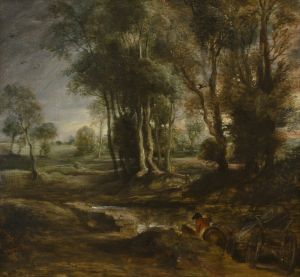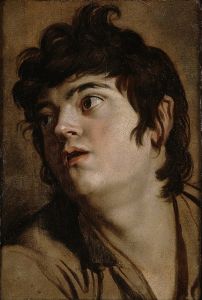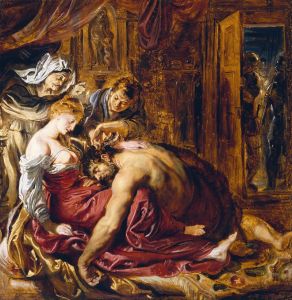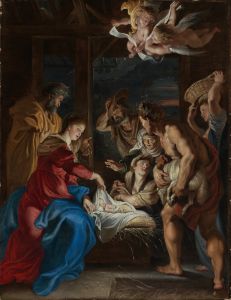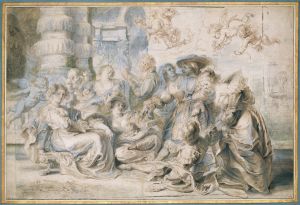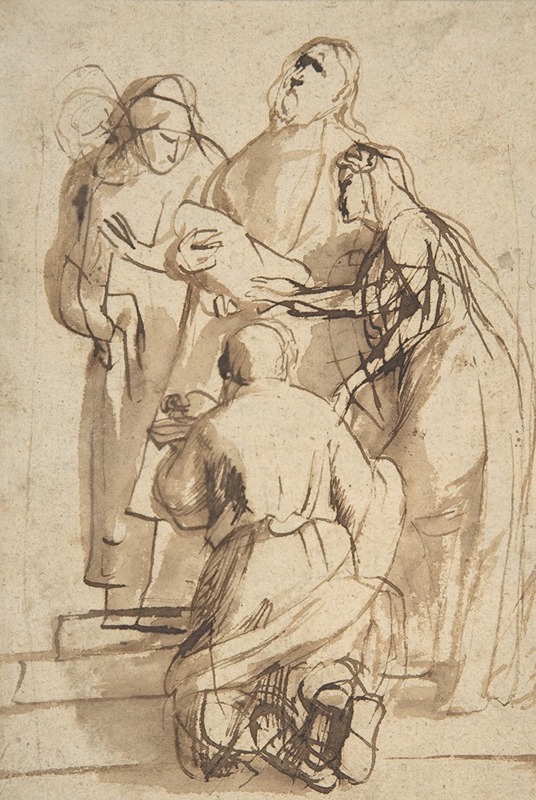
Presentation in the Temple
A hand-painted replica of Peter Paul Rubens’s masterpiece Presentation in the Temple, meticulously crafted by professional artists to capture the true essence of the original. Each piece is created with museum-quality canvas and rare mineral pigments, carefully painted by experienced artists with delicate brushstrokes and rich, layered colors to perfectly recreate the texture of the original artwork. Unlike machine-printed reproductions, this hand-painted version brings the painting to life, infused with the artist’s emotions and skill in every stroke. Whether for personal collection or home decoration, it instantly elevates the artistic atmosphere of any space.
"Presentation in the Temple" is a painting by the Flemish Baroque artist Peter Paul Rubens. Created between 1608 and 1609, this work depicts the biblical scene of the Presentation of Jesus at the Temple, as described in the Gospel of Luke (Luke 2:22–38). The painting illustrates the moment when the infant Jesus is brought to the temple in Jerusalem by Mary and Joseph, in accordance with Jewish law, and is recognized as the Messiah by Simeon and the prophetess Anna.
Rubens, known for his dynamic compositions and vivid use of color, portrays the scene with dramatic intensity and emotional depth. The central figures include the Virgin Mary, holding the infant Jesus, and Simeon, who is shown in an act of reverence as he receives the child. The prophetess Anna is also present, depicted in a posture of devotion. The composition is marked by Rubens' characteristic use of movement and light, which draws the viewer's attention to the central figures and enhances the spiritual significance of the moment.
This painting reflects Rubens' early style, influenced by his studies in Italy and exposure to the works of Renaissance masters such as Michelangelo and Titian. The influence of Caravaggio's use of chiaroscuro can also be observed in the dramatic contrasts of light and shadow within the work. The architectural elements in the background, including classical columns and arches, add a sense of grandeur and timelessness to the scene.
"Presentation in the Temple" is part of Rubens' broader body of religious works, which were highly sought after during his lifetime. The painting demonstrates his ability to convey complex theological themes through expressive figures and dynamic compositions. It is believed to have been commissioned for a private or ecclesiastical patron, as was common for religious artworks of the period.
The painting is currently housed in the Kunsthistorisches Museum in Vienna, Austria, where it remains an important example of Rubens' early mastery and his contribution to Baroque religious art.






